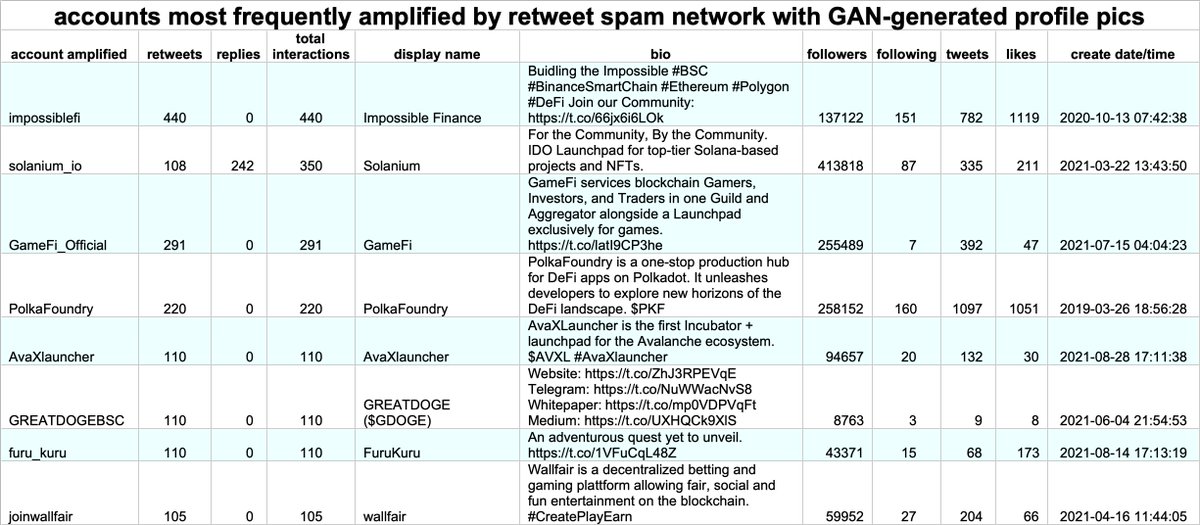Why do all these cats want to have a cup of coffee in the morning, and do they even exist? (Spoiler: no, they do not.) #ThisCatDoesNotExist #WednesdayShenaniGANs
cc: @ZellaQuixote
cc: @ZellaQuixote

The coffee-craving cats are part of a 129 account cryptocurrency spam network. The accounts in this network were created in three batches in August and September 2021, and thus far have (allegedly) posted all of their tweets via the Twitter Web App. 





These accounts do three things:
• post repetitive tweets, most of which are conversational-ish stuff like "I like to have a cup of coffee in the morning", but with occasioal spammy replies about crypto
• retweet crypto/blockchain accounts
• follow crypto/blockchain accounts


• post repetitive tweets, most of which are conversational-ish stuff like "I like to have a cup of coffee in the morning", but with occasioal spammy replies about crypto
• retweet crypto/blockchain accounts
• follow crypto/blockchain accounts



All 129 accounts in this network have GAN-generated profile pics. 56 of these are fake human face pics similar to those produced by thispersondoesnotexist.com, and the other 73 are fake cats resembling those produced by thiscatdoesnotexist.com. 



Here's an animated visualization of the process of blending the 56 "face" pics used by the network. As is the case with all unmodified StyleGAN-generated face pics, the major facial features (particularly the eyes) are in the same location on each image.
Both the GAN-generated human and feline pics contain some bizarre artifacts. Nonsensical backgrounds, backgrounds that blend into the face or cat in unnatural ways, vestigial heads, nonsensical clothing, and deformed or asymmetrical glasses are all somewhat common indicators. 



Account IDs of the 129 accounts in this network, in case anyone wants them: pastebin.com/1iSDrBqb
More information on GAN-generated images (mostly face pics) and their use on (mostly) Twitter in the threads linked in this thread:
https://twitter.com/conspirator0/status/1322704400226394112
• • •
Missing some Tweet in this thread? You can try to
force a refresh































